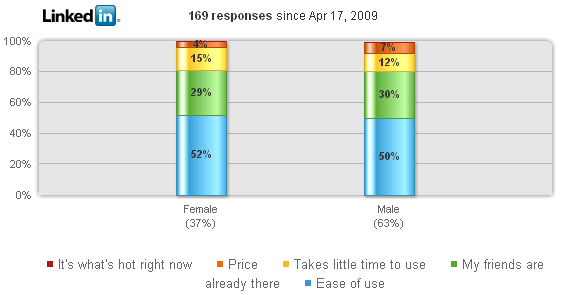Measuring the success of your permission e-mail campaigns is often oversimplified. Marketing managers are often happy to see rising open rates and click-through rates. (If you have no idea on how to measure the click-through rates of your e-mail campaigns, here’s an easy tutorial using Google Analytics). The problem of being content with just measuring open rates and click-through rates from our e-mail campaigns is that we are victims of the brochure mentality.
What’s the problem with the brochure mentality?
The brochure mentality is the mindset that tells us that as long people get our brochure, open it and browse it for a while; somehow they will get “aware of our brand” or that they will “eventually act on it”. Notice that how exactly the readers of a brochure become aware of the brand or act on it is not really defined, it is just left to, yes you got that right, pure chance.
I am sure that newsletter services and talented newsletter writers will challenge the above statement. But think about it for just a second. When discussing with a graphic designer or an e-mail newsletter, how often do you discuss about the actual objective of your e-mail campaign defined in one sentence and whose success can be tracked with one simple measure?
I am not talking about how many people click on your “read more” link or how many people open your “Labor Day Blowout Sale!” e-mail. I am talking about how many people actually end handing you cash in exchange for the product or service that you offer.
Let’s take a look at what Avinash Kaushik has to say on this (Web Analytics: An Hour a Day, p. 220):
Before you start your analytics, it is important to understand, at least at a high level, that there several important steps to the process of executing e-mail campaigns:
- Define business objectives and how e-mail fits into them.
 I just quoted the first step out of 4 to emphasize the importance of this concept. If you’re a frozen yogurt shop, are you in the business of selling frozen yogurt or are you in the business of making people open e-mails? If you’re a humane society that protects animal rights, are you working hard towards increasing the number of people adopting stray dogs or are you working hard that people click on a YouTube video of a sad dog looking for a home?
I just quoted the first step out of 4 to emphasize the importance of this concept. If you’re a frozen yogurt shop, are you in the business of selling frozen yogurt or are you in the business of making people open e-mails? If you’re a humane society that protects animal rights, are you working hard towards increasing the number of people adopting stray dogs or are you working hard that people click on a YouTube video of a sad dog looking for a home?
Before jumping into e-mail (and social media, for that matter) campaigns, you’ve got to have a clear idea of what objectives you want out of it. A clear one sentence objective that can be tracked with one measure.
Here are some great real life examples that I have encountered during my online marketing practice:
- Bake shop: Sell my daily excess inventory of red velvet cupcakes, about 14, before they spoil.
- Online coupon service: Generate 5 paying customers during a week.
 Not so fast, monkey!
Not so fast, monkey!
There are several e-mail newsletter services that work great (e.g. MailChimp), but before you sign up for any of them, do your homework. Even though some offer free trials, hold off signing up for them until you have figured out your one sentence objective whose success can be tracked with one measure.
Helpful Links:



 A couple days ago I ran into a good friend that is trying to make it big in the fashion industry. She is one of the coolest persons that I’ve met: a Japanese born gal that grow up in Mexico speaking mostly English and moved to Montreal to work in the field of fashion design.
A couple days ago I ran into a good friend that is trying to make it big in the fashion industry. She is one of the coolest persons that I’ve met: a Japanese born gal that grow up in Mexico speaking mostly English and moved to Montreal to work in the field of fashion design.
 I strongly believe that this LinkedIn application is a great way to gather data fast and to create actionable bar graphs that you can e-mail to your colleagues. More importantly it follows the fundamentals of permission e-mail marketing by making polls more personal, relevant and anticipated.
I strongly believe that this LinkedIn application is a great way to gather data fast and to create actionable bar graphs that you can e-mail to your colleagues. More importantly it follows the fundamentals of permission e-mail marketing by making polls more personal, relevant and anticipated.

 I just quoted the first step out of 4 to emphasize the importance of this concept. If you’re a frozen yogurt shop, are you in the business of selling frozen yogurt or are you in the business of making people open e-mails? If you’re a humane society that protects animal rights, are you working hard towards increasing the number of people adopting stray dogs or are you working hard that people click on a YouTube video of a sad dog looking for a home?
I just quoted the first step out of 4 to emphasize the importance of this concept. If you’re a frozen yogurt shop, are you in the business of selling frozen yogurt or are you in the business of making people open e-mails? If you’re a humane society that protects animal rights, are you working hard towards increasing the number of people adopting stray dogs or are you working hard that people click on a YouTube video of a sad dog looking for a home? Not so fast, monkey!
Not so fast, monkey!
